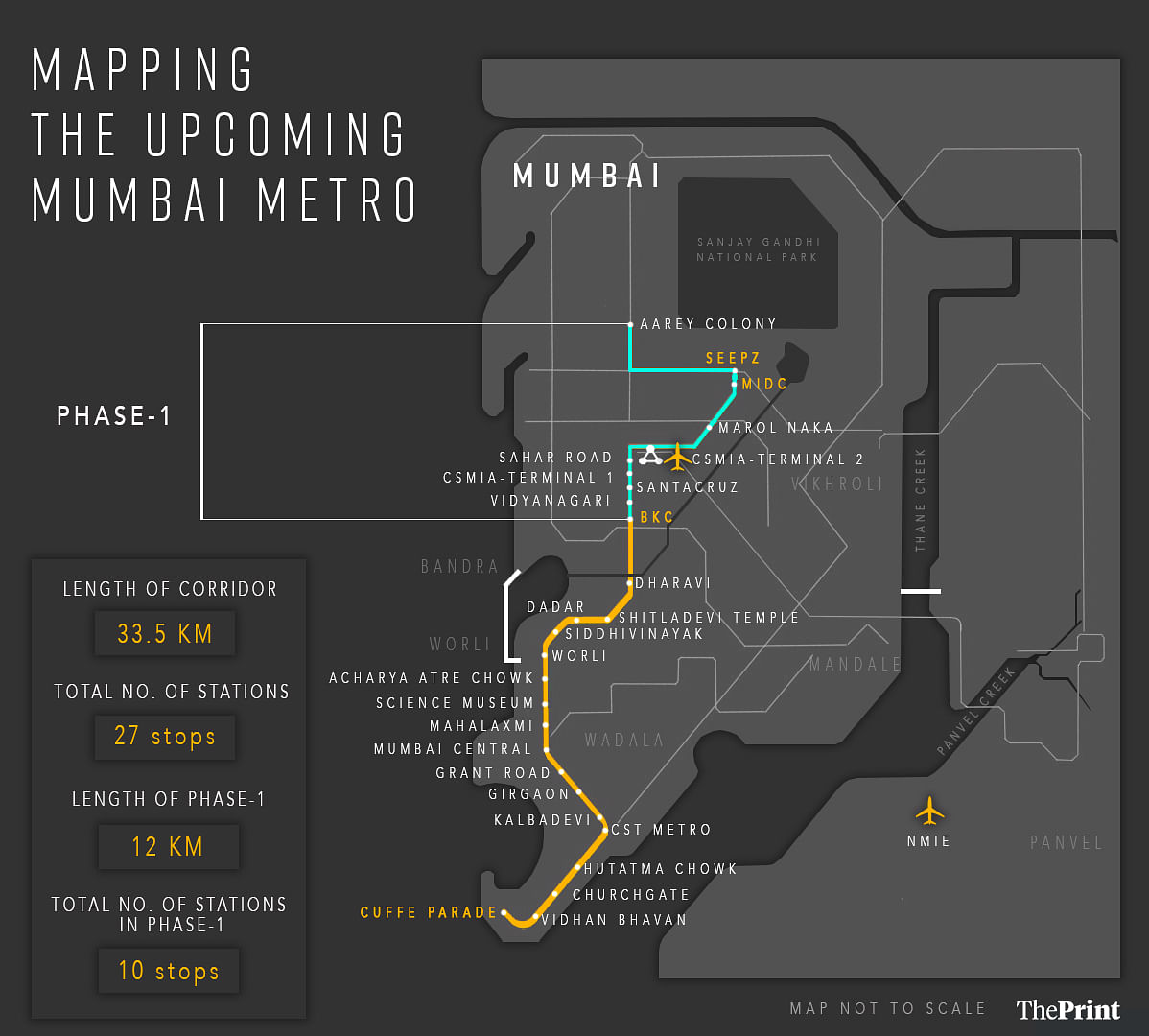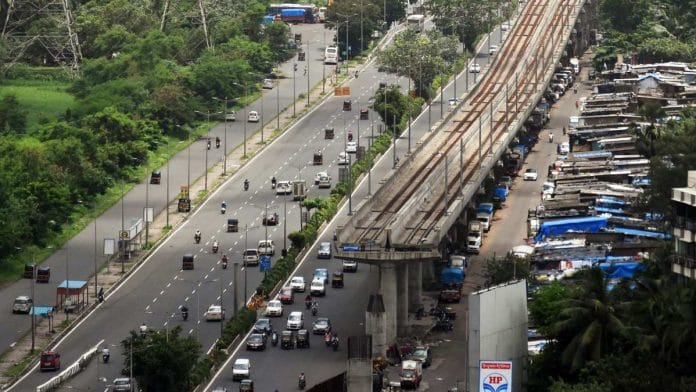Mumbai: Ahead of the Maharashtra Assembly elections, Mumbai’s first underground Metro corridor, among the costliest infrastructure projects in the city, is expected to partially start operations by the end of this month.
The first phase of the 33.3-km corridor, colloquially called Metro 3, was expected to partially open in July, but the deadline was later pushed to August and now the officials of the Mumbai Metro Rail Corporation (MMRC)—a joint venture of the Union and state governments that is implementing the project—hope that it will be able to have the flag-off ceremony before the model code of conduct comes into force.
The dates for elections in Maharashtra are yet to be announced.
The part of the corridor that will be opened for operations starts from the Aarey Colony car depot in Goregaon (East) to Bandra Kurla Complex (BKC), a business district. The entire corridor will stretch to Cuffe Parade, another business district of the city located in south Mumbai.
Phase-1 will provide immense relief to commuters from Mumbai’s western suburbs, giving them access to the eastern suburbs by connecting with the already functional Metro 1—the west-to-east Versova-Andheri-Ghatkopar corridor—through Marol Naka.
It will also boost connectivity between business districts, such as Andheri MIDC, BKC, and SEEPZ (Santacruz Electronics Export Processing Zone), and make the commute to Mumbai’s Chhatrapati Shivaji International Airport (CSIA) easier.
The second phase of this line, from BKC to Cuffe Parade, is expected to be commissioned—open officially—by March 2025, MMRC officials told ThePrint.
Also Read: 2022 could be year Mumbai begins to shed ‘under-construction’ look, authorities have a plan
Status of the Metro 3 project
According to the MMRC, as of 31 August, 93 percent of the overall project work has been completed for the line. Additionally, 99.4 percent of the civil work has been completed. 98.4 percent of the overall work had been accomplished for Phase-1 and 86.7 percent for Phase-2 till 31 August.
The MMRC has obtained Research Designs and Standards Organisation (RDSO) clearance, needed for trials, as well as the ISA certificate for safety assessments, MMRC officials have told ThePrint.
Ashwini Bhide, MMRC managing director, told ThePrint that, for Phase-1, the agency had applied to the Commissioner of Railway Metro Safety (CMRS) to inspect and give final approval to the functioning of its rolling stock—that is, the train sets.
The MMRC will also apply for the CMRS to inspect the electrical and other systems, while the testing work is in its final stages. The CMRS approval process includes inspections, trial runs, and evaluations of the train design, braking systems, fire safety and signalling systems.
Once the inspections are done, the corridor will be commissioned.
Bhide said, “We have invited the Commissioner of Metro Rail Safety for the certification of Rolling Stock. The application for certification of the Aarey JVLR- BKC stations and main line will be submitted after this certification.”
“Once both these approvals are received from the Govt of India, we will commence operations of Phase-1. Metro-3 will change the way Mumbaikars travel and give them respite from traffic snarls,” she added.
The first phase of Metro 3 has 10 stations spread over 12 km, while the entire corridor is 33.5 km long and has 27 stations.
Under Phase-1, BKC, Vidyanagari, Santacruz, Domestic airport (CSMIA-T1), Sahar Road, International airport (CSMIA-T2), Marol Naka, MIDC, and SEEPZ stations are underground, while Aarey Colony is at grade.
The stations for the rest of the line will be at Cuffe Parade, Vidhan Bhavan, Churchgate, Hutatma Chowk, CST Metro, Kalbadevi, Girgaon, Grant Road, Mumbai Central, Mahalaxmi, Science Museum, Acharya Atre Chowk, Worli, Siddhivinayak, Dadar, Shitladevi Temple, and Dharavi, after which the Phase-1 stations begin.

Ten years in the making
The ground-breaking ceremony for the 33.5-km long line was held at Marol in August 2014. However, the construction work started only in October 2016. It was hit by a number of controversies, including over the location of the car shed in Aarey Colony, a green belt, and construction in some very congested areas. That combined with the Covid-19 pandemic slowed down the progress of the corridor.
Meanwhile, the cost of the project ballooned from the original Rs 23,136 crore to Rs 37,276 crore. The project is being implemented with financial assistance from the Japan International Cooperation Agency (JICA).
Other than being the focal point of a political tussle between the Bharatiya Janata Party (BJP) and the Shiv Sena (Uddhav Balasaheb Thackeray), the Aarey Metro car depot also faced stiff resistance from environmentalists and activists who staged multiple protests at the site with a large number of people from the civil society joining them.
The matter went to the Supreme Court and, finally overcoming major hurdles and a delay of two years, in 2022, the apex court gave its nod for construction inside Aarey.
Apart from the political and legal hurdles, civil work and construction in the congested areas of Kalbadevi and Girgaon (which will be a part of phase 2) also presented a challenge—the stations would have to be constructed in close proximity to buildings and some of the areas have a heritage value.
For the first time in India, 17 tunnel boring machines (TBMs) were deployed simultaneously.
“The most daunting task was tunnelling beneath the Mithi river. Apart from that, acquisition of lands for construction activities; shifting of utilities; rehabilitation of PAPs (people affected by project); tunnelling beneath water bodies; as well as tunnelling in complicated geology and below old, dilapidated buildings around congested neighbourhoods and in close vicinity of heritage buildings were also challenging,” an MMRC official said.
(Edited by Sanya Mathur)
Also Read: Mumbai gets nearly Rs 4,000-cr plan to decongest metro station areas ahead of state polls






